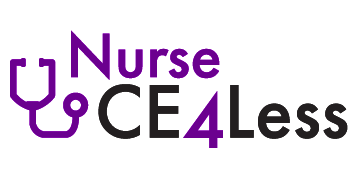Course Summary
Asenapine is a second-generation, atypical, antipsychotic medication that is known to be effective in the treatment of bipolar 1 disorder and schizophrenia. The pharmacological profile and labeled uses and administration of asenapine make it a unique antipsychotic drug of choice in emergency psychiatry cases, the pediatric population and for the maintenance treatment of mixed mood states. Individuals experiencing a manic episode are often treated with benzodiazepines and antipsychotics, although the specific effects of antipsychotics on hostility and aggression in patients with schizophrenia or bipolar disorder have received special attention by emergency clinicians. Asenapine is a non-invasive, fast-dissolving sublingual tablet. Clinical trials have used drug rating scales to help determine how well asenapine treats patient hostility and agitation during a manic or mixed episode.
Course Format
Homestudy
Course Syllabus
- I. Introduction
- II. Pharmacological Profile
- 1. Category
- 2. Mechanism of Action
- 3. Labeled Uses
- 4. Dosing
- 5. Dosing Adjustment: Geriatric Patients
- 6. Dosing Adjustment: Hepatic Impairment
- 7. Dosing Adjustment: Renal Impairment
- 8. Administration
- 9. Available Forms
- 10. US Boxed Warning
- 11. Contraindications
- 12. Adverse Effects
- 13. Warnings and Precautions
- 14. Pregnancy and Breastfeeding
- 15. Drug-Drug Interactions
- III. Clinical Pearls: Asenapine
- 1. Asenapine Overdose
- IV. Case Study: Asenapine
- 1. Case Study 1: Bipolar Disorder with Mania
- 2. Case Study 1: Discussion
- 3. Case Study 2: Bipolar Disorder
- 4. Case Study 2: Discussion
- V. Summary
Author
Dana Bartlett, RN, BSN, MSN, MA, CSPI
Dana Bartlett is a professional nurse and author. His clinical experience includes 16 years of ICU and ER experience and over 27 years as a poison control center information specialist. Dana has published numerous CE and journal articles, written NCLEX material, textbook chapters, and more than 100 online CE articles, and done editing and reviewing for publishers such as Elsevier, Lippincott, and Thieme. He has written widely on the subject of toxicology and was a contributing editor, toxicology section, for Critical Care Nurse journal. He is currently employed at the Connecticut Poison Control Center. He lives in Wappingers Falls, NY.


